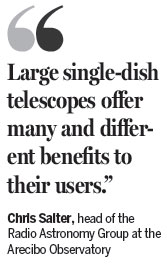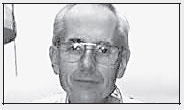Mankind started watching the sky with telescopes since Galileo Galilei some 400 years ago.
Then, gradually, we found out that besides visible light, there are more wavelengths that can be used to explore messages coming from the universe - for example, radio waves.
However, a major obstacle keeps us from hearing weak cosmic signals: Urbanization and the wide application of electronic devices that came with the advancement of technology.
That has driven scientists from six countries, including China, Australia and Canada, to start searching for a site devoid of interference from earthbound electromagnetic signals.
"Mobile phones, televisions, lights - wherever there are people, there is electromagnetic interference," said Li Di, a chief scientist from the National Astronomical Observatories affiliated with the Chinese Academy of Sciences.
Pingtang, a small, sparsely-populated county located in the mountainous regions of Guizhou province, was thought to be a good candidate to become home of the International Square Kilometer Array, or SKA. As proposed in the 1990s, it would have been the largest radio telescope on Earth.

But the design of choice moved toward a telescope known as a "synthesis array", in which signals from many small, widely-spaced dishes are combined to produce images of very high resolution. So it was decided by the SKA committee that the telescope would be built in either South Africa or Australia.
After the plan for Pingtang was set aside, the Chinese government invested in a large telescope known as FAST at the site. It is expected to be completed next year.
Chris Salter, head of the Radio Astronomy Group at the Arecibo Observatory in Puerto Rico, said FAST has its unique advantages.
"Large single-dish telescopes offer many and different benefits to their users," Salter said. "A single dish has wonderful flexibility of use, needs only a single receiver system at any given frequency - rather than a separate receiver system being needed for each telescope in an array - can operate as a planetary radar to image and study bodies within our solar system."
What they say

FAST has already brought well-known overseas-trained scientists back to China. The prospect of acquiring telescope time on the world's largest radio telescope is very alluring.
Lister Staveley-Smith, astronomer, University of Western Australia

China is already expanding its homegrown radio-astronomical talent, and an ever-increasing number of young Chinese astronomers are making names for themselves.
Chris Salter, head of the Radio Astronomy Group at Arecibo Observatory
(China Daily 11/23/2015 page4)
